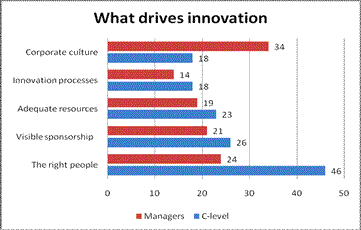![]() Innovation Series on C-level viewpoint the strategic planning process. A recent Arcus survey of 1500 C-Level executives indicates strategic planning can be a frustrating exercise. Just 45 percent of the respondents said they were satisfied with their strategic-planning process. The key to our consulting services is our ability to integrate our know-how in functional areas with our deep industry knowledge.
Innovation Series on C-level viewpoint the strategic planning process. A recent Arcus survey of 1500 C-Level executives indicates strategic planning can be a frustrating exercise. Just 45 percent of the respondents said they were satisfied with their strategic-planning process. The key to our consulting services is our ability to integrate our know-how in functional areas with our deep industry knowledge.
Balanced Score Card
Strategy is all About Implementation. The Arcus approach is all about Implementation. A Balanced Scorecard can only have value if it is linked to the organizations Strategic Direction. Read more.
Strategic planning models
Below are some of the models we use on corporate, business unit and growth strategies.
Model One – “Basic” Strategic Planning: This very basic process is typically followed by organizations that are extremely small, busy, and have not done much strategic planning before. The process might be implemented in year one of the nonprofit to get a sense of how planning is conducted, and then embellished in later years with more planning phases and activities. Planning is usually carried out by top-level management. Read more.
Model Two – Issue-Based (or Goal-Based) Planning: Organizations that begin with the “basic” planning approach described above, often evolve to using this more comprehensive and more effective type of planning. The following table depicts a rather straightforward view of this type of planning process. Read more.
Model Three – Alignment Model: The overall purpose of the model is to ensure strong alignment among the organization’s mission and its resources to effectively operate the organization. This model is useful for organizations that need to fine-tune strategies or find out why they are not working. An organization might also choose this model if it is experiencing a large number of issues around internal efficiencies. Read more.
Model Four – Scenario Planning: This approach might be used in conjunction with other models to ensure planners truly undertake strategic thinking. The model may be useful, particularly in identifying strategic issues and goals. Read more.
Model Five – “Organic” (or Self-Organizing) Planning: Traditional strategic planning processes are sometimes considered “mechanistic” or “linear,” i.e., they’re rather general-to-specific or cause-and-effect in nature. For example, the processes often begin by conducting a broad assessment of the external and internal environments of the organization, conducting a strategic analysis (“SWOT” analysis), narrowing down to identifying and prioritizing issues, and then developing specific strategies to address the specific issues. Self-organizing requires continual reference to common values, dialoguing around these values, and continued shared reflection around the systems current processes. Read more.
Growth and change as key elements
Arcus Consulting Group and the Association for Corporate Growth have launched a major collaboration to explore growth and change as key elements of corporate and business unit strategy. Arcus is privileged to work together with the Association for Corporate Growth, pioneering solutions to today’s most pressing business issues. In conjunction with the Toronto Chapter of the ACG, Arcus will be conducting specific surveys with senior executives in a variety of industries.
What does it take to innovate?
The majority of executives say it involves risk management and a comprehensive strategy for value creation. These achievements enable companies to define the major trends in products, systems and services, and to offer customers important added value. They say it helps to cut costs, increase sales and achieve higher earnings. But how does one come up with new solutions, and can innovation really be part of a strategy plan? Arcus’ multi-industry survey of senior executives found that of all the challenges companies face in this area, the biggest challenge is finding ways to create “a culture of innovation”.
Drivers of Innovation
Arcus research indicates that to create such a culture, you need to be surrounded by highly talented people. Arcus believes that creating the right culture and finding the right people can have a dramatic impact on the results of innovation projects. Managers and C-Level executives broadly agree about processes, resources and the need for visible sponsorship of the process of innovation. Respondents to our survey of 1500 C-Level executives and managers indicated that culture and talent are closely correlated with a superior performance on innovation.

Address barriers
Our research indicates that middle managers can facilitate the innovation process or serve as bottlenecks to the open flow of ideas and knowledge in an innovation network. Often, there is a gap in the perceived value of an innovation initiative at the middle management level. The process is seen as just another initiative that will increase their workload and add to the complexity of their priorities. Senior executives with successful innovation strategies often emphasize the importance of ensuring a high level of participation and buy-in by middle management in the innovation process. A strategy that has worked well in some organizations is to take the network to middle managers and encourage an exchange of ideas and knowledge at the middle management level. A decentralized approach often improves the performance of innovation initiatives.
Concepts and strategy
Our approach is to first use our collective experience to come up with 15-20 provocative concepts for a strategy. These are based on a series of questions that probe various topics and drivers of change. The outcome of the process is used to build several strategic maps to define and strengthen each hypothesis for a strategy.
Arcus Insight
- Solve your toughest problems. Read more.
- The state of the economy and impact of the financial crisis.
- 5 tips to help you innovate in uncertain times
- Strategies to channel investments into areas that will drive growth
